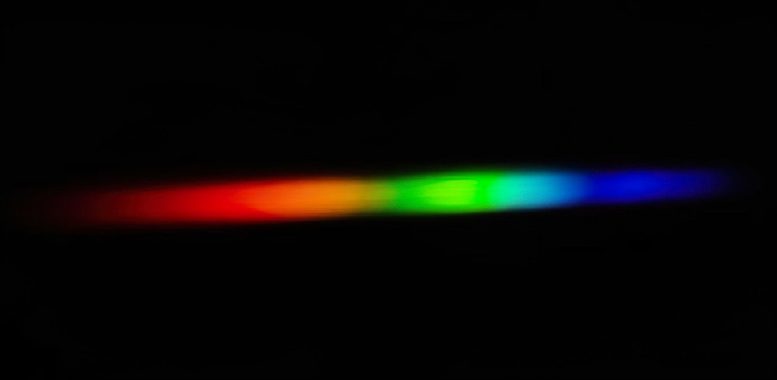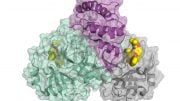
An intense white-light laser casts a brilliant rainbow, as demonstrated by a photo from the experiments conducted by L. Hong’s team at South China University of Technology. Credit: L. Hong et al., South China University of Technology.
Water facilitates a broad-spectrum supercontinuum white laser spanning an impressive range of wavelengths.
Researchers are achieving notable progress in creating ultra-broadband white laser sources, which span a broad range of wavelengths from ultraviolet to far infrared. These advanced lasers are utilized in a variety of areas, including extensive imaging, femtochemistry, telecommunications, laser spectroscopy, sensing, and the field of ultrafast sciences.
However, the pursuit faces challenges, particularly in the selection of appropriate nonlinear mediums. Traditional solid materials, while efficient, are prone to optical damage under high peak power conditions. Gas mediums, though damage-resistant, commonly suffer from low efficiency and technical complications.
Innovative Solutions with Water as a Nonlinear Medium
In an unconventional move, researchers from the South China University of Technology recently turned to water as a nonlinear medium. Abundant and inexpensive, water proves immune to optical damage, even under the influence of high-power lasers. As reported in the Gold Open Access journal Advanced Photonics Nexus, water-induced spectral broadening involves enhanced self-phase modulation and stimulated Raman scattering, resulting in a supercontinuum white laser with a 435 nm 10 dB bandwidth covering an impressive 478–913 nm range.
Advances with Water-CPPLN Collaboration
Taking innovation further, researchers combined water with a chirped periodic-poled lithium niobate (CPPLN) crystal, known for its robust second-order nonlinear power. This partnership not only expanded the supercontinuum white laser’s frequency range but also flattened its output spectrum. According to the corresponding senior author Prof. Zhi-Yuan Li, “The cascaded water–CPPLN module provides a long-lived, high-stability, and low-cost technical route for realizing a ‘three-high’ white laser with intense pulse energy, high spectral flatness, and ultrabroad bandwidth.”
The output from this water-CPPLN collaboration is promising. With a pulse energy of 0.6 mJ and a 10 dB bandwidth spanning more than an octave (413–907 nm), this ultra-broadband supercontinuum source has potential in ultrafast spectroscopy and hyperspectral imaging. Li observes, “It offers high resolution across physical, chemical, and biological processes over extreme spectral bandwidths with a high signal-to-noise ratio. It opens an efficient route to creating a long-lived, high-stability, and inexpensive white laser with intense pulse energy, high spectral flatness, and ultrabroad bandwidth, paving a way for new possibilities in scientific research and applications.”
Reference: “Intense white laser of high spectral flatness via optical-damage-free water–lithium niobate module” by Lihong Hong, Yuanyuan Liu, Haiyao Yang, Lingzhi Peng, Mingzhou Li, Yujie Peng, Ruxin Li and Zhi-Yuan Li, 12 January 2024, Advanced Photonics Nexus.
DOI: 10.1117/1.APN.3.1.016008









According to topological vortex gravitational field theory, the formation and propagation of light are closely related to the interaction between topological vortices. Not only water, but also more excellent media have surprising power in laser development.
I hope researchers are not fooled by the pseudoscientific theories of the Physical Review Letters (PRL), and hope more people dare to stand up and fight against rampant pseudoscience.
The so-called academic journals (such as Physical Review Letters, Nature, Science, etc.) firmly believe that two objects (such as two sets of cobalt-60) of high-dimensional spacetime rotating in opposite directions can be transformed into two objects that mirror each other, is a typical case of pseudoscience rampant.
If researchers are really interested in Science and Physics, you can browse https://zhuanlan.zhihu.com/p/643404671 and https://zhuanlan.zhihu.com/p/595280873.
The interaction of topological vortices gives humanity infinite possibilities. If you are interested, you can browse https://zhuanlan.zhihu.com/p/390071860 and https://zhuanlan.zhihu.com/p/463666584.
There are more and more superior media waiting for researchers to explore and discover based on correct theories and methods.